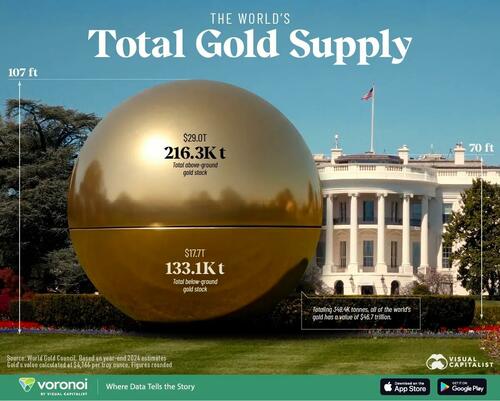But policy makers — of both monetary and fiscal policy — do not have the luxury of time right now. Global growth is slowing down, and macroeconomic stress is building. With so much up in the air, the policy choices are not straightforward. There is no option but to work with the quarterly estimates for Q2 of FY23 (July – September 2022) released by the National Statistics Office, NSO.
These rudimentary estimates must be interpreted carefully, bearing in mind that the likelihood that they will undergo sharp revisions is higher than normal, given the discrepancies are estimated at a 10-quarter high for the quarter. Discrepancies are a residual measure to account for the difference between the GDP computations based on the production and the expenditure approaches. It is estimated at 2.9 per cent of GDP in Q2 as compared with 0.3 per cent in Q1 (April –June 2022).
You might also like
What’s driving FIIs’ bullish bets on Nifty
IIT-K student hits record ₹4 cr placement jackpot
Story takes a turn for PVR, Inox Leisure after a flop Q2
How young Indian couples budget for their weddings
With this caveat in place, what do the estimates say about the economy?
First, the good news: in Q2, the economy completely reversed the output loss that the pandemic caused. Till the previous quarter, Q1, the output of services like trade, hotels, transport and communications had remained lower than pre-covid levels. In Q2, even that contact-intense part of the economy surpassed the pre-pandemic output level.
The not-so-good news is that relative to Q1, the GDP growth slowed down. GDP is estimated to have grown 6.3% y-o-y in Q2 compared to 13.5% in Q1. The Q1 estimates were helped statistically by the low base from the pandemic years when the lockdowns had brought the economy to an abrupt halt, resulting in deep contraction in the GDP.
Yet, the loss of growth momentum visible in the Q2 estimates may not be due to statistical distortions. The pace of growth was slowed by private spending, investments and exports losing steam. These drivers had been powering the economy so far. (Revisions on use of better quality data, though, may show faster or quicker pace of loss of momentum.)
Private consumption growth was estimated at 25.8% y-o-y in Q1. It has been estimated at 9.7% in Q2. It remained one of the big contributors to growth during the quarter. But contributed less than in the previous quarter, Q1.
Although private consumption sustained, the spending appears to be on imports rather than domestic production. While imports grew 25.4%, manufacturing GDP shrank 4.3% y-o-y in Q2.
This is disappointing as the Modi government has been focused on providing all-round push to manufacturing through a multitude of policy and budgetary levers — ranging from ‘Make in India’, ‘Performance-Linked Incentives’ and other allocations from the union budget to the increases in import duties and schemes for cheap and concessional credit. The objective is to spur jobs creation.
But high inflation and weakening global demand appear to have tripped the efforts causing manufacturing output to be lower in Q2. Rising input costs would have eroded corporate profitability, while global demand cooling off would have hit exports.
Net exports were a drag on growth during the quarter. Export growth stood at 11.5% y-o-y, helped largely by services exports. Merchandise exports contracted on impact of central banks across countries fighting the decades high inflation by cooling off demand, as noted by Mint SnapView.
Investments, as measured by the gross fixed capital formation, grew 10.4% y-o-y in Q2 as compared to 20.1% in Q1. Their contribution to growth was lower. This was expected as monetary policy tightening during the quarter and global uncertainty rising were not conducive for the investment climate.
The growth is estimated to have come primarily from the services (8.7% y-o-y) and farm sector (4.6% y-o-y). Services became the main engine of growth in the quarter. The complete lifting of the lockdowns increased opportunities to spend resulting in pent-up demand for services that saw the fastest growth in the last three quarters. But after that initial rush, spending by households and businesses is likely to be conservative. The hectic pace of growth of services GDP may not sustain.
Exports and investments may also recover only after the global uncertainties settle down a bit.
What are the policy implications?
The fiscal lever of budgetary spending will be constrained going forward. Already, the slowing down of government expenditure (which reduced 4.4% y-o-y as compared with 1.3% growth in Q1) was a drag on GDP growth. As the government strives to reduce the fiscal deficit by cutting back the pandemic-time extraordinary increases in expenditures, the growth impulse in the economy will enfeeble. The push for capital expenditure should be sustained but will show results only in the medium term.
The task of monetary policy hasn’t become any easier. Inflation remains above the RBI’s upper tolerance limit of 6%. It will, therefore, not be in a position to pause the interest rate hikes in spite of the slower growth in the GDP estimates.
Policy makers must strive to ensure that the recovery won’t fade away but will regain strength quickly. The focus may have to shift from monetary and fiscal policy levers to the specifics of the manufacturing push.
Elsewhere in Mint
In Opinion, Himanshu explains the puzzle of vanishing inequality but rising poverty. Ajit Ranade tells how the RBI’s digital currency will help economy. Indira Rajaraman writes on the troubling return of the old pension scheme. Long Story pans the Hindi heartland where Bollywood has gone bust.
Download The Mint News App to get Daily Market Updates.
More
Less
















